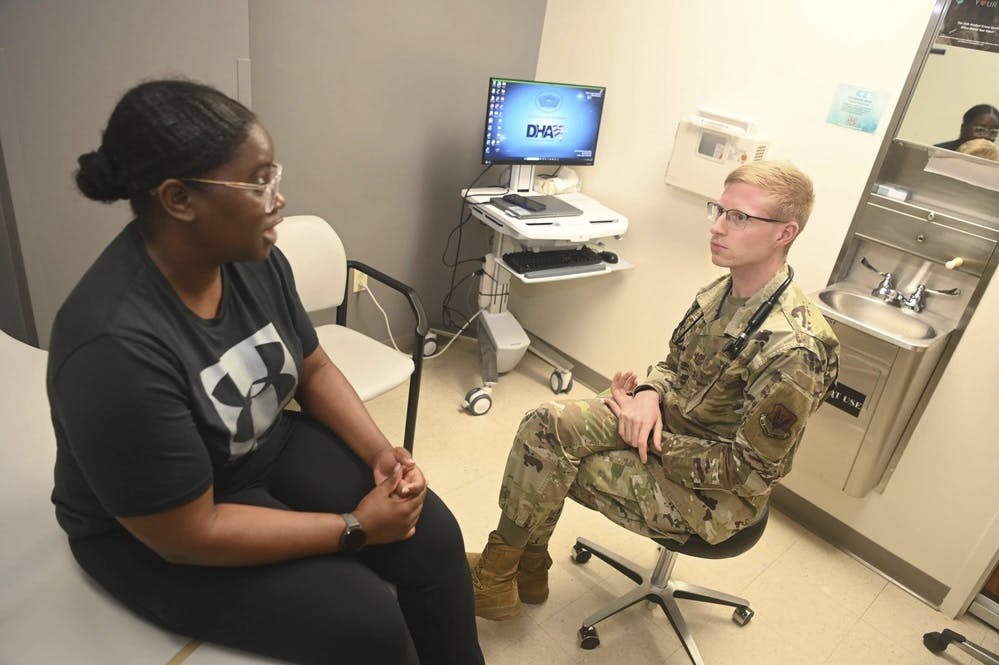The Tech Behind the New Social Security Website
Social Security Administration Acting Chief Business Officer Eric Powers explains the redesigned ssa.gov site and discusses tech supporting the effort.

The Social Security Administration (SSA) launched its redesigned website, ssa.gov, at the end of 2022, made possible through human-centered design and self-service models. In terms of next steps, SSA will target automation to identify areas for improvement and augment self-service functions.
The COVID-19 pandemic spurred the need for more efficient and streamlined digital services to keep up with demand in the modern, remote environment, SSA’s Acting Chief Business Officer Eric Powers told GovCIO Media & Research in an interview.
President Joe Biden’s 2021 customer experience executive order added to SSA’s charge. The legislation called on agencies to integrate human-centered design and digital service concepts to improve government’s customer experience — now a cornerstone of ssa.gov.
“Our customers are conducting more of their business across multiple service channels now than they did pre-pandemic; that includes online and telephone. Prior to the pandemic, they often tended to operate in a single channel. So, we really need to look at our experiences across our different channels in a way that they are connected and have consistency on how we present and talk about our services,” Powers said. “We are transforming our products, our technology, our business processes from a customer-centered standpoint.”
The new site leveraged human-centered design concepts to build out self-service capabilities and improve accessibility. SSA analyzed customer data and conducted user research to inform where the gaps were, test designs and implement iterative changes on the site.
The agency conducted more than 75 focused research and testing sessions and partnered with the U.S. Digital Service in 2020 to enhance user experience. In April 2022, SSA launched its beta website. During that period, there were more than 200,000 visitors who visited the site and SSA recieved more than 7,000 written feedback responses.
“It’s really part of a larger effort to improve how the public can do business with the agency in that channel,” Powers said. “That website and the work that we did with beta and our testing and iterative processes ultimately led to what we released.”
Based on user research, SSA made visual and structural changes to the site to be task-focused to improve accessibility and usability, informed by the U.S. Web Design Standards and the UK design platform.
“From a usability perspective, it allows for faster page scanning. It also helps particularly with customers who might be in rural or limited internet areas with slower connections,” Powers said. “From a content perspective, we increased font size, and our content is streamlined with less words. There’s more whitespace on our site. Again, this helps our customers process their information more easily, particularly individuals with cognitive needs.”
SSA integrated modern technology tools on both the front and back end of the site to improve effectiveness. On the front end, the “check eligibility function” allows customers to self-navigate SSA’s programs. Moving forward, the agency plans to apply those concepts to other business units to build out the self-service model.
“We also are doing smaller tools across the site for things like helping people understand their retirement age; looking at things like annual earnings limits for people who are going into retirement and are concerned about how their continued working will impact their benefits,” Powers said. “There’s lots of these little widgets now that allow people to answer or provide some basic information quickly and get a concise answer back out of the website in a way that doesn’t require them to know all our equations, laws and exceptions to be able to get to the answer.”
On the backend, SSA implemented new technologies to support the site’s function. The agency’s site is built on a content management system that allows for rapid and efficient iteration and content creation. SSA is also using newer technologies like a content delivery network to broadcast content across the country.
“Our content creators can update content on location of the site or through administrative tools rather than having to code things from scratch. It allows us to make sure that our information is accurate through processes behind the scenes for checking quality,” Powers said. “Instead of our core server being the only place where everybody needs to access our content, with that content delivery network, it puts the information at locations all over the place. That also helps with things like load times and speeds for people in various areas.”
Currently SSA is operating in a “hybrid state,” Powers said, where there are sections of the site that feature upgrades to content and services, but there are still programs and areas that need to be modernized.
Looking ahead, SSA will build on the new foundation to continuously improve functionality and user experience. Powers said SSA plans to leverage automation to reduce customer burdens, use text analytics to identify areas of improvement and integrate more tools and widgets to improve the self-service function.
“So far, we’re actually seeing pretty substantial increases of satisfaction, but we are very early in this process… At this stage we are really looking at improving access to our services and helping people understand our programs and services so that they can engage the agency effectively,” Powers said. “Over time, we’ll also look at how we can automate to improve the actual services to be less of a burden and more accessible to all customers downstream… As we move through all our services, we’re looking for opportunities to make the whole experience of our website one experience rather than an informational and transactional site.”
This is a carousel with manually rotating slides. Use Next and Previous buttons to navigate or jump to a slide with the slide dots
-

IRS Makes Direct File Code Public as Lawmakers Debate Program’s Fate
The agency sees the Direct File source code as beneficial to government digital services despite what happens with it in proposed budgets.
5m read -

FEHRM CTO Targets Two-Year Cloud Migration for Federal EHR
Lance Scott touts new EHR tech advancements, including cloud migration, expanded data exchange and AI integration to improve care delivery.
4m read -

Federal Agencies Tout Tech in President Trump’s First 100 Days
Defense modernization and health care restructuring landed among some of the key IT highlights within the president's first few months.
6m read -

AI Boosts Customer Experience at Federal Contact Centers
Federal contact center leaders at DOL and VA are exploring AI's potential to drive efficiency and boost customer experience.
3m read -

Feds Modernize Services to Improve User Experience
Tech leaders at CMS, USPTO and IRS are leveraging tech and bolstering security to drive new efficiencies and enhance user experience.
5m read -

Acting TMF Executive Director Eyes AI to Drive Efficiency
Acting TMF Executive Director Jessie Posilkin looks to AI to modernize government's IT infrastructure and improve efficiency.
5m read -

Platform One Tackles Next Phase in Software Delivery
The software delivery engine sets its sights on DevSecOps infrastructure and preparing for a post-quantum future as it matures.
7m read -

Federal IT Efficiency Summit
The Efficiency Summit is a must-attend for agency decision-makers looking to streamline IT modernization efforts that save taxpayers money.
Hyatt Regency Tysons Corner Center | 7901 Tysons One Pl, Tysons, VA 22102 -

VA Restructures Workforce to Cut Costs, Increase Efficiency
The agency is restructuring its workforce to streamline operations, invest in technology and improve veteran services.
4m read -

VA Secretary Doug Collins Promises Veteran-Centered Reform
The new VA Secretary Doug Collins targets user experience, veteran choice and modernization to advance bipartisan efforts like the PACT Act.
4m read -

Trump Names Gregory Barbaccia New Federal CIO
Army veteran and former Palantir head takes over as federal CIO and will oversee government's $70+ billion IT budget.
2m read -

VA Secretary Praises World-Class Presidential Transition Efforts
Secretary Denis McDonough said his team has provided tools for the Trump administration to tackle community care and EHR modernization.
4m read
















